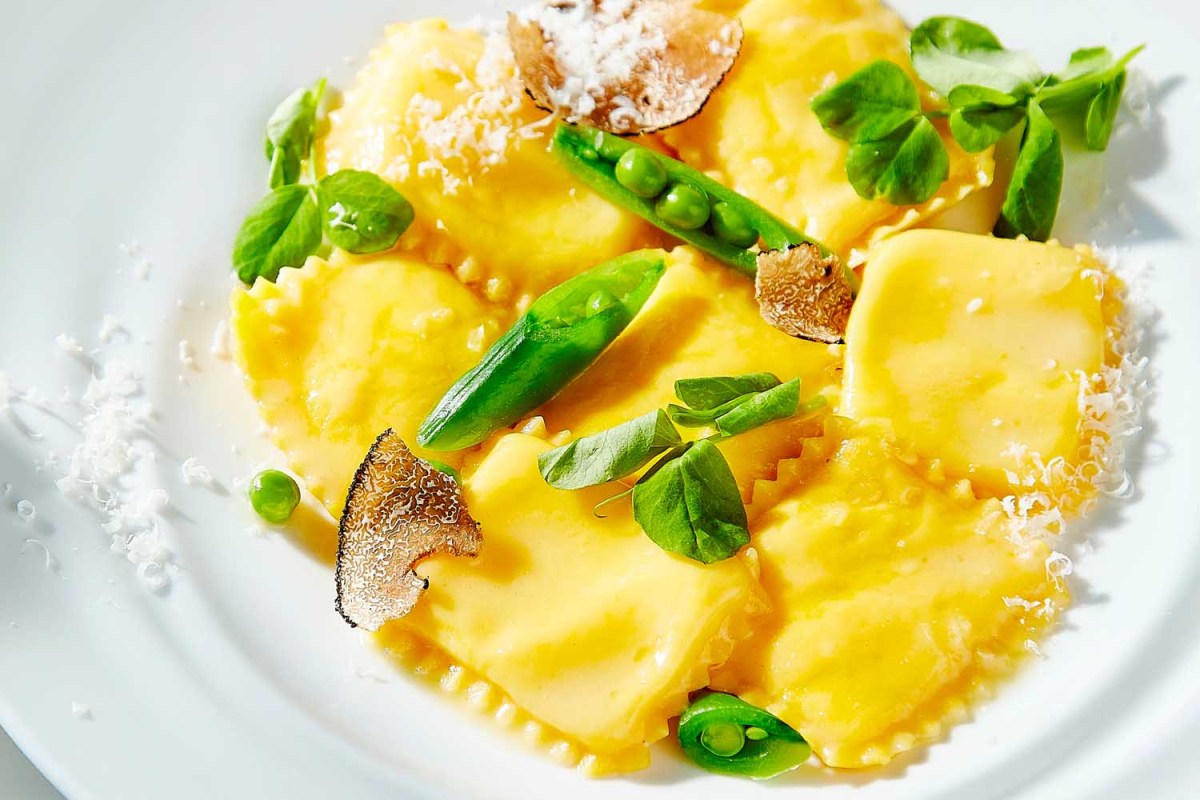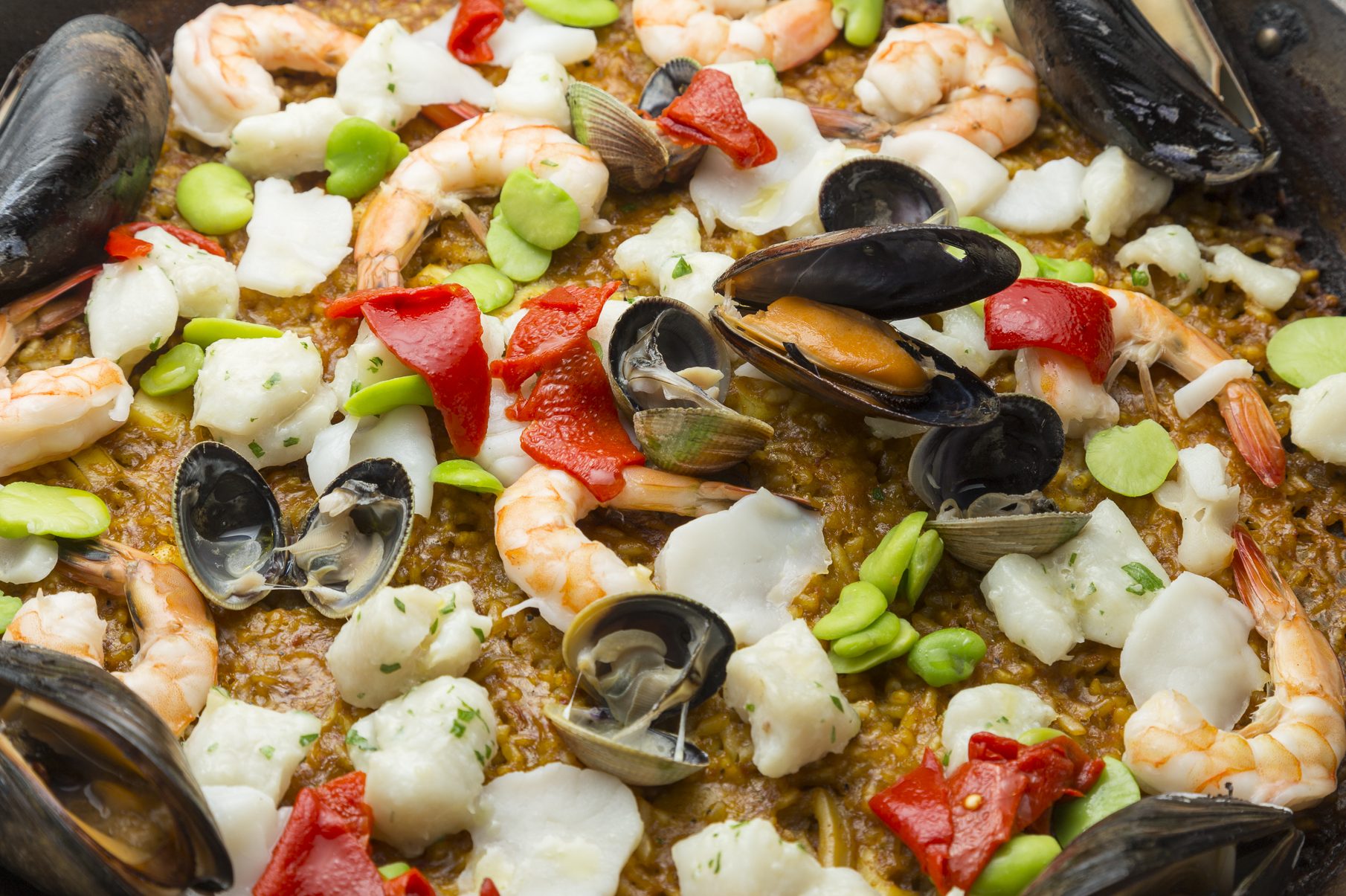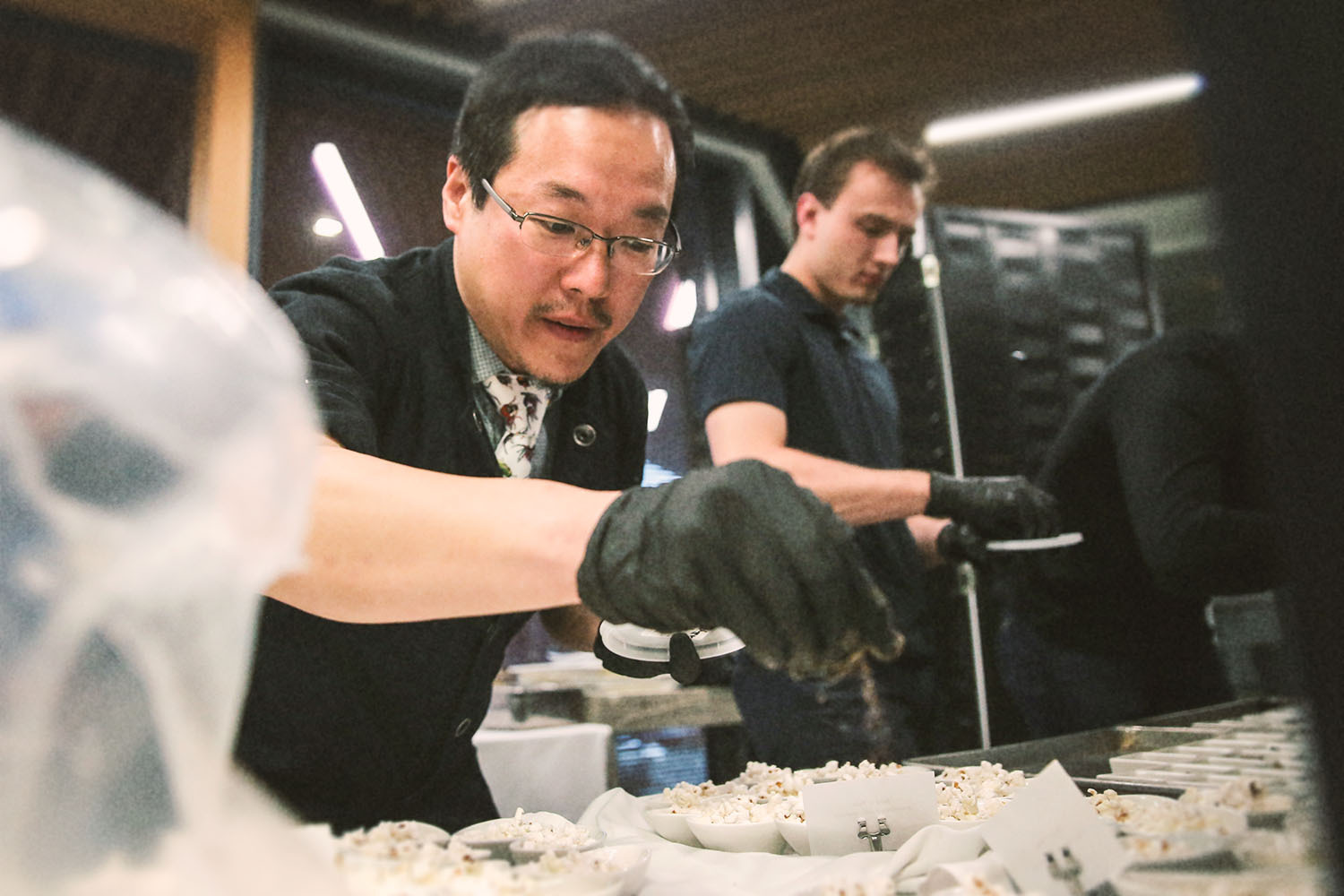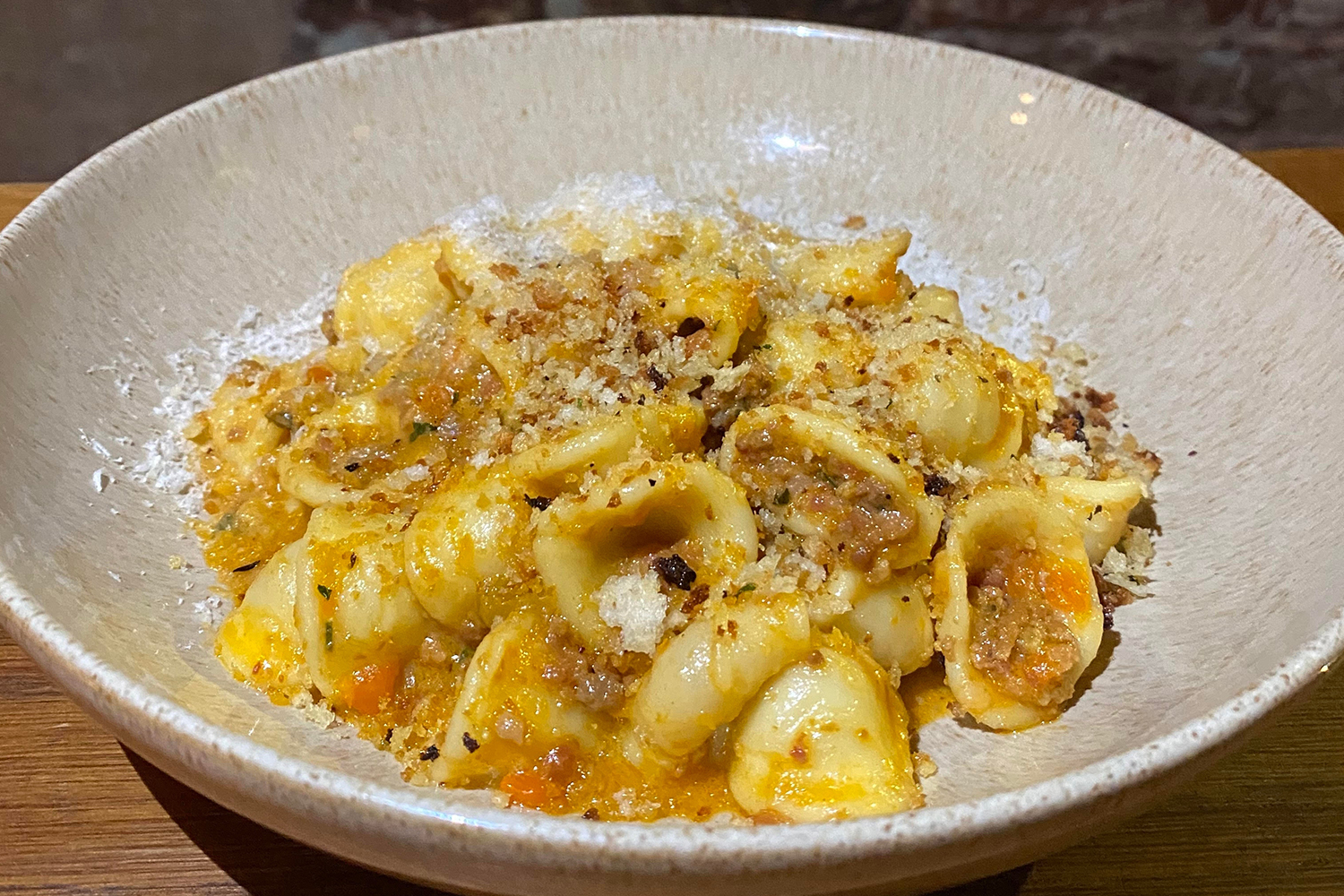Before his many restaurants and TV appearances and frozen dinners, Wolfgang Puck was a young boy in southern Austria without much to his name. Both his mother and grandmother were cooks, his mother a professional one, and they instilled the love of the craft in him from a young age. One of his favorite dishes growing up was known as Käse Nudeln, a potato and cheese ravioli-like dish common in his region of Austria.
“We grew up very poor and noodle dough is easy to make,” Puck tells InsideHook. “We never bought spaghetti. We made almost everything.”
Like the love child of a ravioli and a pierogi, Käse Nudeln was a staple of Puck’s youth. It features the rib-sticking qualities one would want out of a home-cooked meal coming from an Austrian village.
“We hardly ever had meat. Maybe on Sunday we had meat. So everything else we ate had to be sturdy,” he says. The dish comes in a simple sauce of browned butter that helps to accentuate the richness of the cheese and the starchy potato filling.
“My stepfather would always say ‘put more butter, put more butter’ and we used to make our own cheese by letting milk sit outside and get sour,” he adds. “We’d mostly use that cheese to make Käse Nudeln. We mixed potatoes, eggs, some sautéed onions and some spices to form golfball-sized raviolis. Then cook them slowly in water.”
It’s one of those dishes that brings about pangs of nostalgia for the world famous chef, which is why some variation of the dish has been on menus at his restaurants from Ospero to Spago.
As we spoke, Puck mentioned how the 40th anniversary of the original Spago in Beverly Hills, an iconic haunt for locals and celebrities alike, had just passed without him realizing until a friend brought it up. Since its inception, Spago restaurants have spread across the globe and, improbably, only recently opened the first European outcropping — in Budapest of all places.
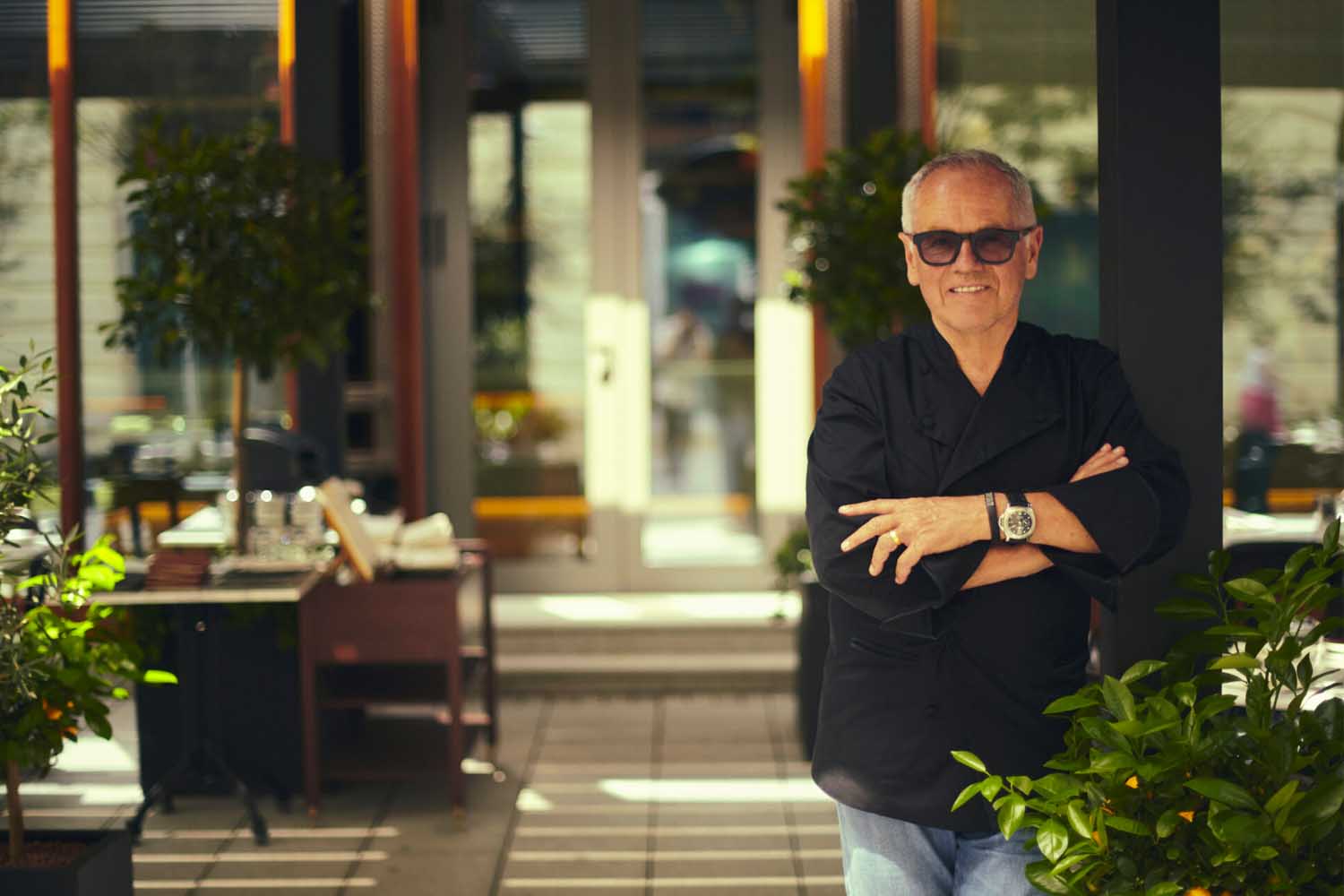
“I like to do things in places that I don’t know as much about. Hungary is right on the border of Austria, but the language and culture is totally different,” he says. “The food is different too. But the city of Budapest is beautiful, just the way the Danube goes through the town. I was very excited to open a restaurant in an old palace.”
The restaurant, which features the Käse Nudeln, can be found in Matild Palace, a recently opened hotel housed in a converted palace from the early 1900s. It is listed as a UNESCO World Heritage Site for its beauty and history, an important locale during the height of Eastern Europe’s cafe culture boom. The new hotel is hoping to create that same watering hole type for creatives in modern times, instituting a storied locale like Spago but complementing it with a robust local wine program.
But the ravioli of Puck’s youth persists on the menu. It’s too important, and too delicious, to be left off.
In the spirit of keeping the dish alive, Puck shared the recipe with us, which you’ll find below. Pro tip: The recipe Puck provides is quite large, and he recommends freezing a portion of the ravioli before cooking if you don’t have enough friends present to eat the entire output.
Wolfgang Puck’s Mother’s Käse Nudlen With Brown Butter
Recipe courtesy Wolfgang Puck
Yield: Serves 6
Ingredients:
1 pound baking potatoes (about 2 large potatoes), scrubbed thoroughly
2 tablespoons (1/4 stick) unsalted butter
2 tablespoons minced shallots
1 teaspoon minced garlic
8 ounces farmer cheese
5 ounces goat cheese
2 ounces mascarpone cheese
3 tablespoons freshly grated Parmesan cheese
2 tablespoons minced fresh mint leaves
2 tablespoons minced fresh chervil leaves
1 egg, slightly beaten
Kosher salt and freshly ground white pepper
1 recipe Pasta Dough (see below)
Semolina or all-purpose flour, for dusting
1 egg lightly beaten with 1 teaspoon water, for egg wash
8 tablespoons (1 stick) unsalted butter
1/4 cup freshly grated Parmesan cheese
Minced fresh flat-leaf parsley leaves
Directions:
Make the filling: Bake the potatoes in a preheated 350-degree (F) oven until fork tender, about 30 to 40 minutes. Peel, and while still warm, pass through a food mill. In a small sauté pan, heat the butter over medium heat. Add the shallots and garlic, and cook until soft. In a medium bowl, combine all the cheeses, the herbs and the beaten egg. Add the cooked shallots, garlic and the warm potato. Stir until blended (being careful not to overmix, or the mixture will get pasty). Season with salt and pepper. Cover and refrigerate until needed. Then, with lightly moistened hands, roll into 1/2-ounce balls, about the size of golf balls.
Make the ravioli: Cut the pasta dough into 4 portions and work with 1 portion at a time, keeping the remaining dough covered with plastic wrap. Lightly dust the work surface with flour. With a pasta machine or a rolling pin, roll out the dough about 20 inches long and 4 inches wide. Brush the dough with egg wash and arrange 9 to 10 balls of filling on the lower third of the length of the dough, about 1 to 1-1/2 inches apart. Fold the top half over to cover the balls. Press the dough around each ball to seal, making sure they are well sealed. With a 2-inch round cookie cutter, cut the ravioli. Dust a tray with flour and arrange the ravioli on the tray, dusting with more flour. Repeat with the remaining dough, egg wash and filling. Refrigerate, covered, until needed. Bring a large pot of salted water to a boil. Cook the ravioli until al dente, about 3 to 4 minutes. Meanwhile, in a large sauté pan, over high heat, cook the butter until it begins to brown. Drain the ravioli and place on a serving platter. Sprinkle with Parmesan cheese and a little pepper. Spoon the browned butter on top. Garnish with parsley and serve immediately.
Pasta Dough
Yield: Serves 6
Ingredients:
3 cups flour
8 large egg yolks
1 teaspoon kosher salt
1 teaspoon extra virgin olive oil
2 to 3 tablespoons water
Semolina or all-purpose flour, for dusting
Directions:
In a food processor fitted with the steel blade, combine the flour, egg yolks, salt, olive oil and 2 tablespoons of the water. Process until the dough begins to hold together, then stop the machine and pinch the dough to test it. If it’s too dry, add up to 1 more tablespoon of water and process until it forms a moist ball. Turn out on a smooth, lightly floured work surface and knead by hand, until a smooth ball is formed. Loosely wrap in plastic wrap and let rest at room temperature for 30 minutes to 1 hour.
Cut the dough into 4 equal pieces. Keep the other pieces covered in plastic while you roll out one piece at a time, by hand with a rolling pin or through the rollers of a pasta machine, stretching the dough to the desired thickness.
If using a pasta machine, set the rollers at the widest opening. Flatten the first piece of dough into a thick strip no wider than the machine, to enable it to pass through the rollers. If necessary, dust the pasta very lightly with flour. Run the pasta through the machine. Fold in thirds, crosswise, and run through the machine again. Repeat this procedure two or more times, until the dough is smooth and somewhat elastic. Set the machine to the next smaller opening and run the dough through the rollers. Continue rolling and stretching the dough, using the smaller opening each time, until the next to the last or the last opening is reached, dusting lightly with flour only as necessary. (The strip of dough will be long. If you don’t have enough space on your worktable, halfway through the rolling process cut the strip of dough in half and continue to work with each piece separately, keeping the unused dough covered.)
Adjust the cutting mechanism to the desired width, cut the noodles, and allow them to dry before cooking. A convenient way to dry pasta is to arrange the cut pasta on a pastry tray sprinkled with flour, preferably semolina flour. As one layer is completed, sprinkle flour over the noodles, place a piece of parchment paper over them, and continue layering with noodles and flour. Dry for at least 15 to 20 minutes.
Repeat with the remaining pieces of dough.
Join America's Fastest Growing Spirits Newsletter THE SPILL. Unlock all the reviews, recipes and revelry — and get 15% off award-winning La Tierra de Acre Mezcal.
